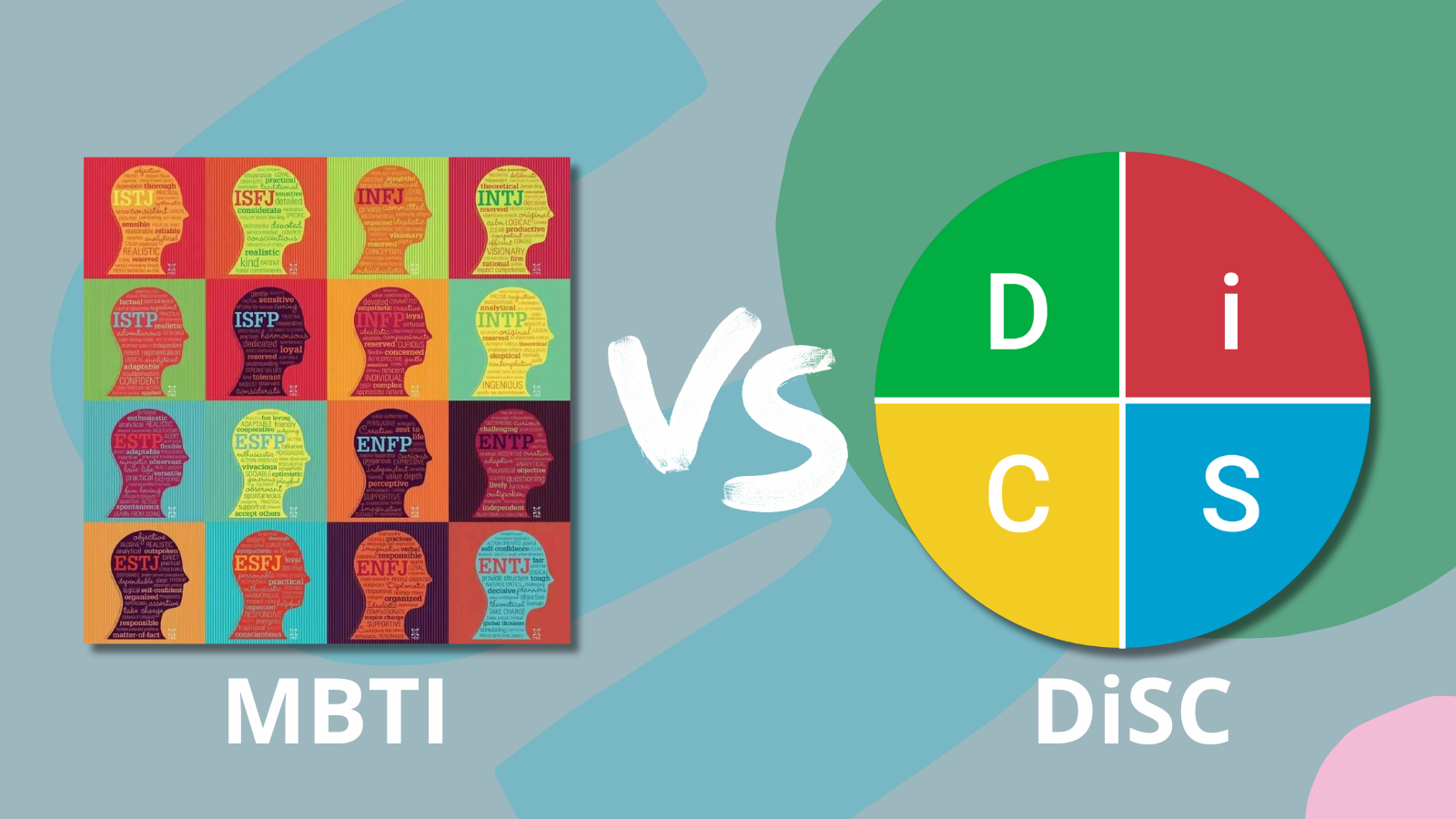Shared by eTACSEN Managing Director Terence Yeung
Understanding one’s personality is crucial for career development and interpersonal relationships. I would like to share the key differences between two well-known personality assessment tools, Myers-Briggs Type Indicator (or “MBTI”) and DiSC, to help you choose the tool that best aligns with your needs and explore how they can be used in different situations.
MBTI and DiSC are among the most popular personality assessment tools today. However, they have distinct differences in their theories and applications.
Type Theory: Unveiling Your Unique Personality Tendencies
MBTI is based on Type Theory, which primarily focuses on identifying to which type an individual belongs on a certain dimension and does not evaluate the intensity of that type. The scores in the assessment reflect the clarity of an individual’s belonging to a certain type. This theory consists of four dimensions: Extraversion (E) or Introversion (I), Sensing (S) or Intuition (N), Thinking (T) or Feeling (F), and Judging (J) or Perceiving (P). By combining these dimensions, MBTI categorizes personality into 16 types. It facilitates a comprehensive understanding of one’s innate tendencies and personal preferences, including how individuals acquire energy, interact with the external world, perceive information, and make decisions. MBTI offers valuable insights for personal planning and development, empowering individuals to adapt more effectively to the environment, make informed career choices, and enhance their overall selves.
Trait Theory: Revealing Your Behavioral Style and Situational Responses
DiSC is based on Trait Theory, which assesses individuals’ behavioral styles to understand personality traits. Trait Theory examines the intensity of individual traits. For example, a high score in the “D” category indicates a strong Dominance trait. DiSC classifies people’s behavioral styles into four main types: Dominance, Influence, Steadiness, and Conscientiousness. It focuses on individuals’ behavioral expressions and interaction styles in different situations. DiSC is known for its simplicity and offers clear classifications of behavioral styles, allowing individuals to quickly grasp their own and others’ behavioral tendencies. It is widely used in team interactions and organizations, facilitating better collaboration, communication, and problem-solving.
MBTI vs DiSC: Differences in Depth and Simplicity
MBTI offers a higher level of sophistication by providing detailed classifications and descriptions of personal traits. Its comprehensive nature makes it particularly valuable for professionals seeking a deeper understanding of themselves and others. However, this complexity can present challenges when interpreting and comprehending the MBTI. The requirement for in-depth thinking and interpretation may make it difficult for ordinary individuals to retain the eight letters and sixteen types associated with the MBTI. This difficulty in memorization, in turn, hinders the practical application of MBTI in daily interactions, limiting its potential to enhance relationships and improve communication effectiveness.
DiSC stands out for its simplicity and ease of understanding. It offers clear classifications of behavioral styles and uses concise and straightforward descriptions, enabling individuals to quickly grasp their own and others’ behavioral tendencies. DiSC is highly versatile and intuitive, making it suitable for a wide range of audiences including the general public.
Application Suggestions: Tools for Personal Development and Team Collaboration
When it comes to personal planning and development, MBTI offers precise and personalized guidance, helping individuals understand their innate preferences, strengths and weaknesses. It provides valuable insights for career development and interpersonal relationships.
On the other hand, DiSC proves more advantageous in team interactions and organizational applications. By understanding the behavioral styles of team members, individuals can enhance collaboration, communication, and problem-solving. DiSC’s user-friendly nature allows team members to quickly grasp each other’s behavioral tendencies, fostering enhanced cooperation and team effectiveness.
MBTI and DiSC are distinct personality assessment tools that differ significantly in theory and application. MBTI delves into an individual’s unique innate inclinations, making it ideal for personal development. In contrast, DiSC focuses on behavioral styles and situational responses, making it a valuable tool for enhancing team interactions and organizational contexts. Regardless of the chosen tool, personality assessment aids in gaining a better understanding of oneself and others, leading to enhanced personal and team effectiveness. By embarking on a journey of self-discovery and selecting the personality assessment tool that best aligns with one’s needs, individuals can achieve greater success and fulfillment in both their professional and personal lives.


